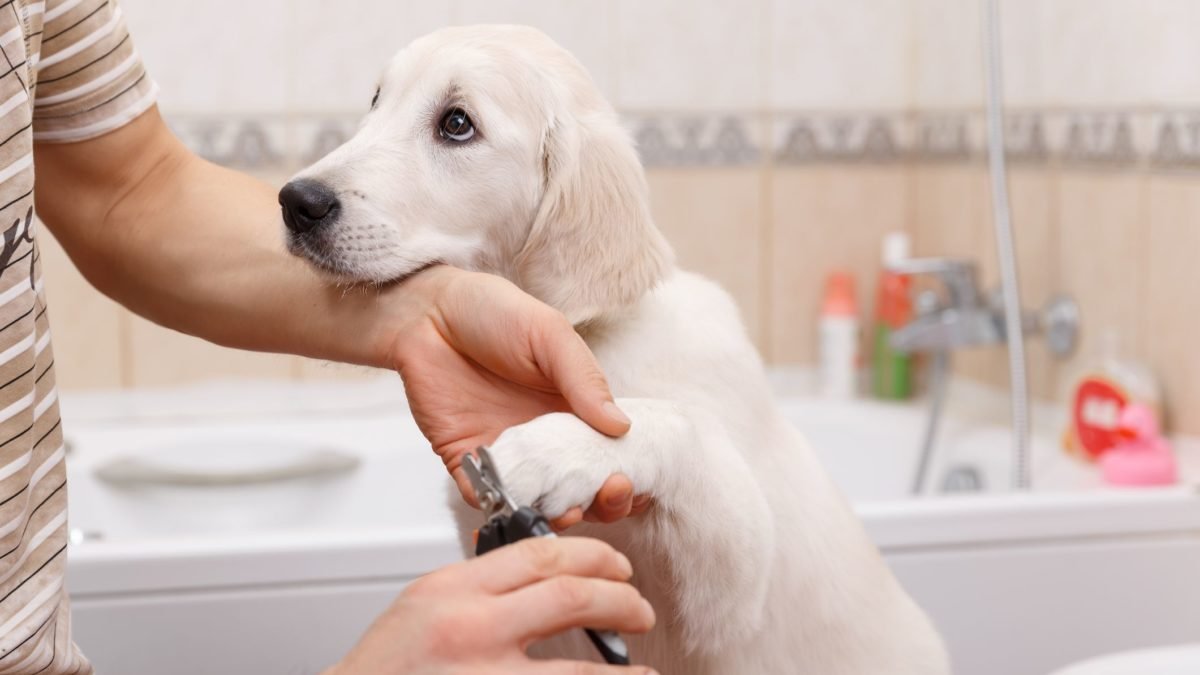Managing your canine’s nails can be scary for both you and your furry friend. It’s critical to trim nails, which might prompt a few negative potential issues for your canine. Luckily, a little planning can assist you with keeping your dog’s paws safe and neat.
How often should you trim your dog’s nails?
Everything relies on where your dog strolls, how dynamic they are, their diet, and various other elements. Regardless, your dog’s nail shouldn’t be touching the ground. Make sure you trim the nails before it outgrows.
Watch out for your little guy’s paws and find an ideal opportunity to use the trimmers. First, check if you can hear your canine’s nails tapping on the ground. If yes, please use the clippers ASAP. Make sure you trim your dog’s nails every month without fail.
However, there are a few breeds whose nails grow quickly and will need a trim every week or two.
How to trim your dog’s nails?
To manage your canine’s nails, you’ll require suitable instruments. Human nail clippers, ordinary scissors, and similar tools aren’t intended to deal with your canine’s nails. Instead, there are explicit clippers intended to cut canine nails that are accessible from your nearby pet stores.
There are distinct styles of canine nail clippers you can look over, such as scissor trimmers for enormous canines with thicker nails and guillotine trimmers for little or medium-sized varieties. The suitable nail trimmers will make it simpler for you to cut your canine’s nails.
Allow your canine to see and sniff the trimmer so that he won’t act weird, and you don’t need to chase him around. It’s great to allow your canine to become used to seeing these instruments. Hold their paws carefully and cut quickly and confidently. Have someone else he trusts to hold him if you think he will move around a lot. Finally, reward your canine buddy with something they like and applause after trimming their nails.
If your dog truly hates giving paws to you, they’ll need to become adjusted to it. Start by gently getting one of your canine’s paws momentarily before pushing down a little and cutting each protruding nail. After that, it would be best to compensate your dog with a treat and some recognition quickly.
When your canine becomes addicted to this underlying activity, as in the treat giving, it’ll love trimming its nails after that. Then you will be able to move that paw around while clipping the nails in the optimum position for you. Remember, reward your canine after each attempt, to build that positive relationship with you touching your dearest companion’s paw cushions, nails, and feet.
A few canines can take longer than others to become OK with individuals holding their paws. Put in a couple of days rehearsing with every one of the four of your canine’s paws. Taking care to get your dog settled with this process can make nail managing significantly less distressing for yourself as well as your dearest companion.
Things you need to consider while cutting the nails:
- Don’t cut past the bend of the nail.
- Cut the nail at a 45-degree point with the goal that the highest end of the pin sticks out somewhat farther than the base.
- Check each nail after trim to ensure you have not cut it too much.
- This interaction is more straightforward with canines with light-shaded nails, so if your dog has dull nails then ensure you trim them in the best light possible.
Every pet parent loves their canine. No one wants to see their dog hurt while trimming the nails or after an accident or illness strikes. pet insurance for cats policy will help ease the pain of paying for the vet bills in these situations. Pet insurance allows you to take him to a vet without thinking about the financial ramifications.
A pet insurance for dogs policy helps in saving dollars on expenses throughout your dog’s lifetime so get dog insurance early and make the most of it.
Related posts
Subscribe Now
* You will receive the latest news and updates on your favorite celebrities!
Meet the Author

Gillion is a multi-concept WordPress theme that lets you create blog, magazine, news, review websites. With clean and functional design and lots of useful features theme will deliver amazing user experience to your clients and readers.
Learn moreHOT TOPICS
Categories
- Animals (6)
- Business (576)
- Cooking (3)
- Design (17)
- Education (59)
- Entertainment (62)
- FASHION (89)
- Fashion (38)
- Featured (19)
- FOOD (42)
- Guide (55)
- Health (290)
- HOME (181)
- Interior (14)
- Life (8)
- Lifestyle (111)
- Motivation (6)
- News (47)
- People (4)
- Photography (5)
- Review (4)
- Style (4)
- TECH (176)
- Travel (107)
- Uncategorized (1,171)



Stay connected